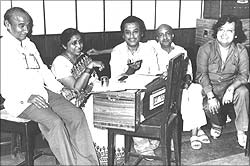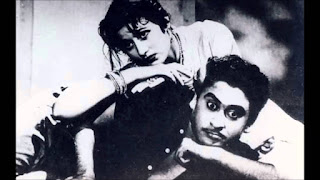Over the years, women portraying central characters in Hindi cinema have been few and far between. Those portrayed, including the protagonists, are rarely holistic and mostly subject to ingrained biases. Today the scene has changed more and more woman oriented films are being made. 30 movies in last three years where females play central role in plot have been released,the success of Queen,English Vinglish, Piku, Neerja. Kahani and Marry Com has led the way to this new trend.
Rarely have films like Kunku presented women as strong women who can raise their voice against injustice, who can rebel in their own way and make their own political statement.Kunku (Marathi title) was a 1937 Marathi classic social drama film directed by V. Shantaram, and based on the novel, Na Patnari Goshta by Narayan Hari Apte, who also wrote film’s screenplay.The film was also released in Hindi as Duniya Na Mane (The Unexpected).Shanta Apte played the role of Nirmala.
Each decade has presented its own brand of women in Hindi cinema. Mother India is a strong political statement on a woman who can do anything to establish that justice has been done even while remaining within the framework of marriage and motherhood. She defies the micro state of being a biological mother in order to fit into the framework of becoming the mother of the nation when she shoots down her own son to save the honour of a woman of the village.
Before Mother India in 1955 Nutan played a role of a teenager Gauri ( in Seema) who goes to live with her paternal uncle, Kashinath, and his wife. She is ill-treated there, made to do all the housework, and verbally abused by her aunt. She is made to work as a servant for meager wages in another household, and her earnings are taken away by her aunt. One day, Kashinath is summoned to the Police Station where he is told that since Gauri has been convicted of stealing a necklace from her employer, she is placed under his care for 12 months. Kashinath undertakes to look after her, but she manages to escape, and beats up Bankelal, who had originally accused her of stealing the necklace. The Police are summoned again, and this time Gauri is placed with Shree Satyanand Anathalaya, an orphanage run by a compassionate Manager, Ashok. Gauri revolts against all the rules imposed upon her and she is placed in solitary, where she ends up breaking all the windows and furniture. Then one day she escapes, beats up Bankelal severely, and returns.
The character of Rosie played by Waheeda Rahman in this 1965 classic film Guide showed women in a different light. At a time women were expected to be dutiful and follow their husbands even when unhappy, Rosie left her cheating and unsupportive husband and decided to choose her passion for dancing and someone who valued her as a person
.
Smita Patil gives a strong performance of transforming from a vivacious teenager to a wiser but deeply wounded middle-aged woman in 1977 film Bhumika.It tells the life story of an actress, Usha (Smita Patil), who is the granddaughter of a famous female singer of the old tradition from Devadasi community of Goa.
The 1988 film Khoon Bhari Maang has Rekha who played the role of Aarti and Jyoti is also one such role where woman play the central role .for this role she got Filmfare Award.
If there is one character which touched everyone’s heart, it was that of Rani played by Kangna Ranaut in Queen. Rani’s transformation from a once shy and timid girl to a confident and liberated lady was amazing.
The story of a middle-aged woman played by Sridevi in English Vinglish living in the shadows of her family who gets a chance to step out and do something for herself. This is when she learns English and shuts up everyone who had ever doubted her confidence in life.
Vidya Balan in Kahaani plays a pregnant woman who is on a mission to find out her husband's murderer. She's strong and not willing to give up. This is a movie with one of the best climax scenes in the recent times.
Rani's role played by Kangana Ranaut touched everyone’s heart. Rani’s transformation from a once shy and timid girl to a confident and liberated lady was amazing. The natural, innocent and effortless acting made Rani look like a real life character and had the ability to inspire many girls to come out of the shadows and feel confident about themselves.
Deepika Padukone in 2015 film Piku showed the struggles of a young independent woman juggling her personal and professional life, but in a fresh manner. Piku loved both of these aspects of her life and wanted to give up on none of them. She was a loving (at times irritated) daughter and a brilliant professional, depicting the reality of many working women today
Mary Com, Priyanka Chopra puts life into Kom's role and is just as energetic and hardworking as Kom is in real life. A wife, a mother and a fighter, she is the modern wonder woman.
Sonam Kapoor in 2016 film Neerja played the real life incidents of the very courageous Neerja Bhanot, a Pan Am flight attendant who lost her life while saving several others when her aircraft was hijacked.
























